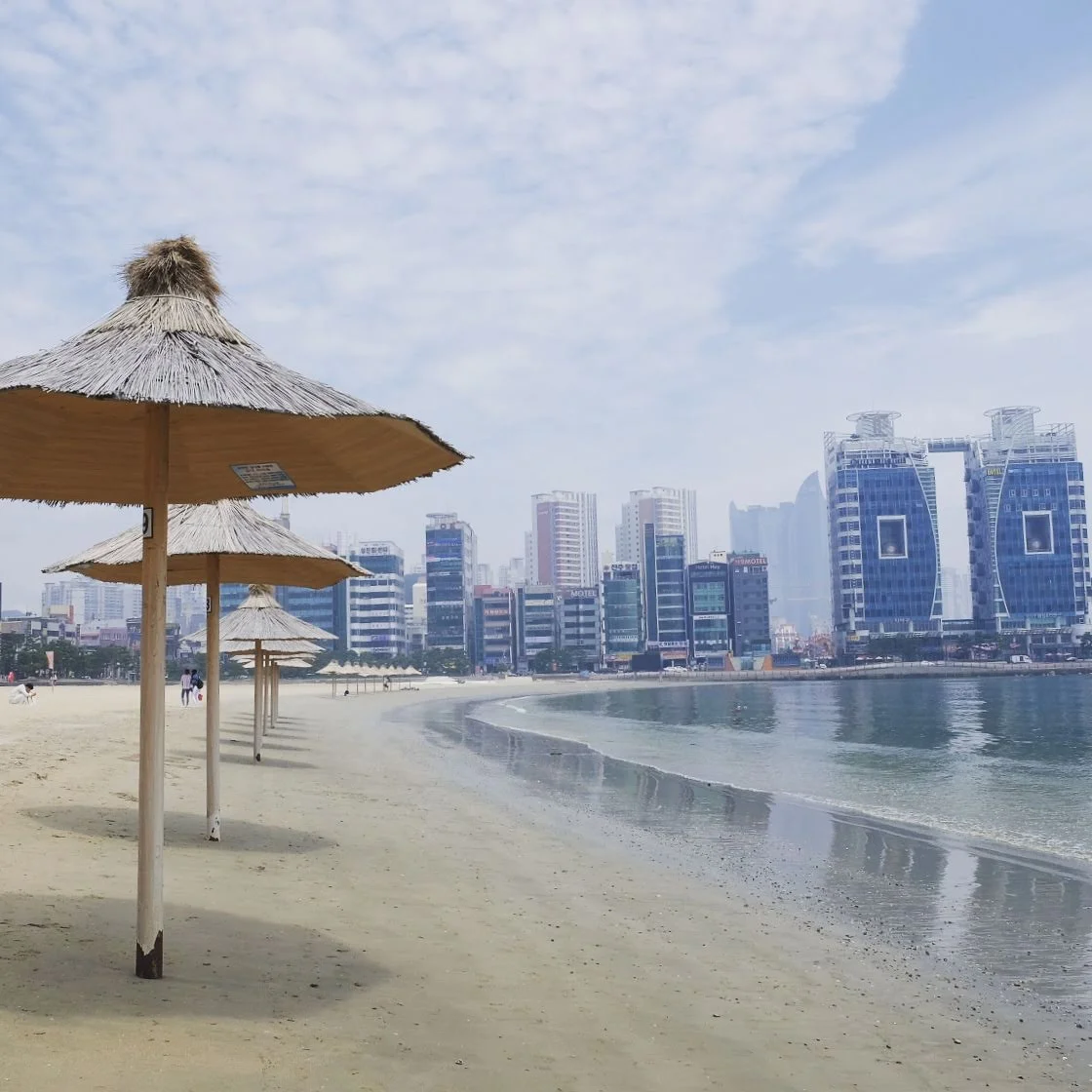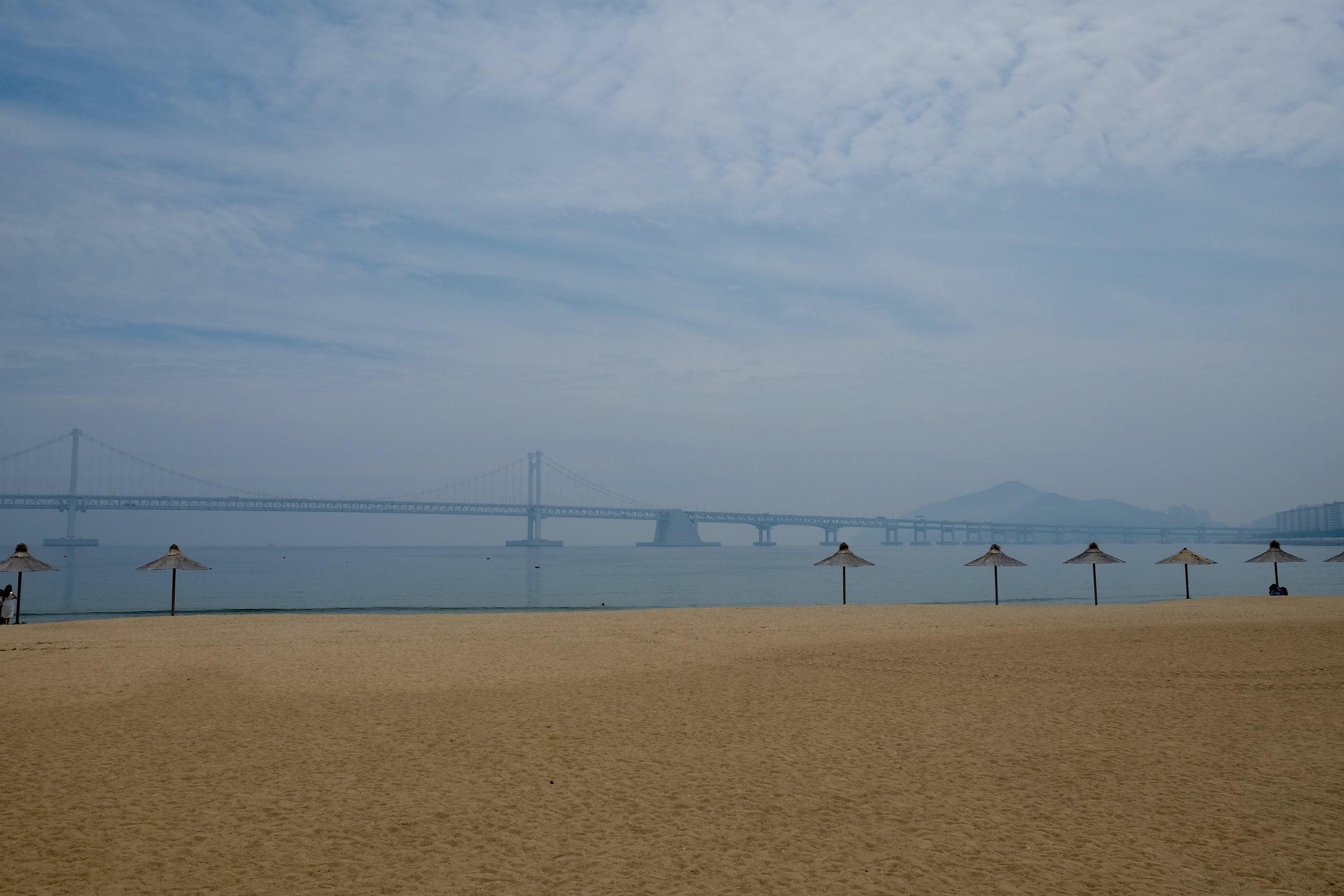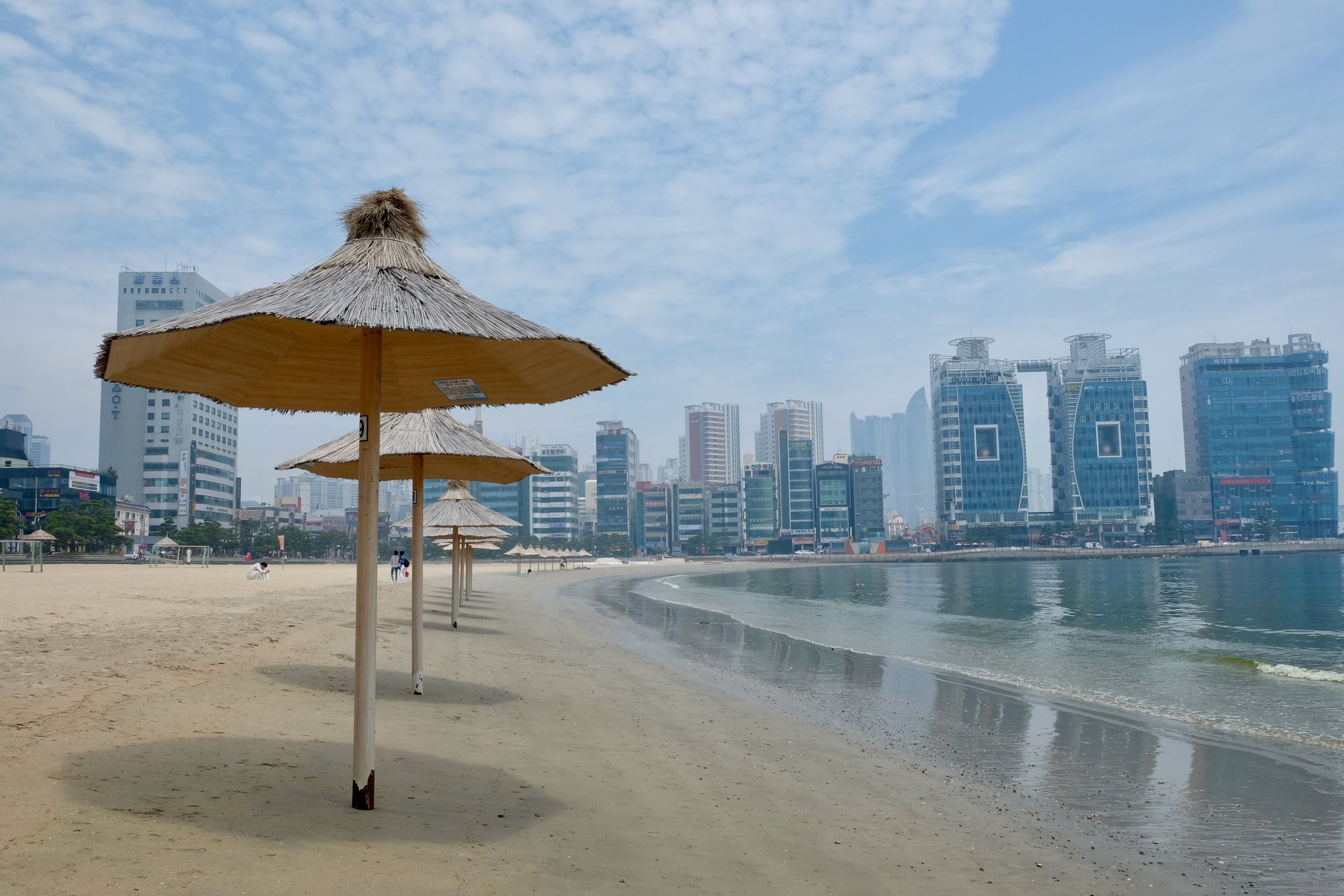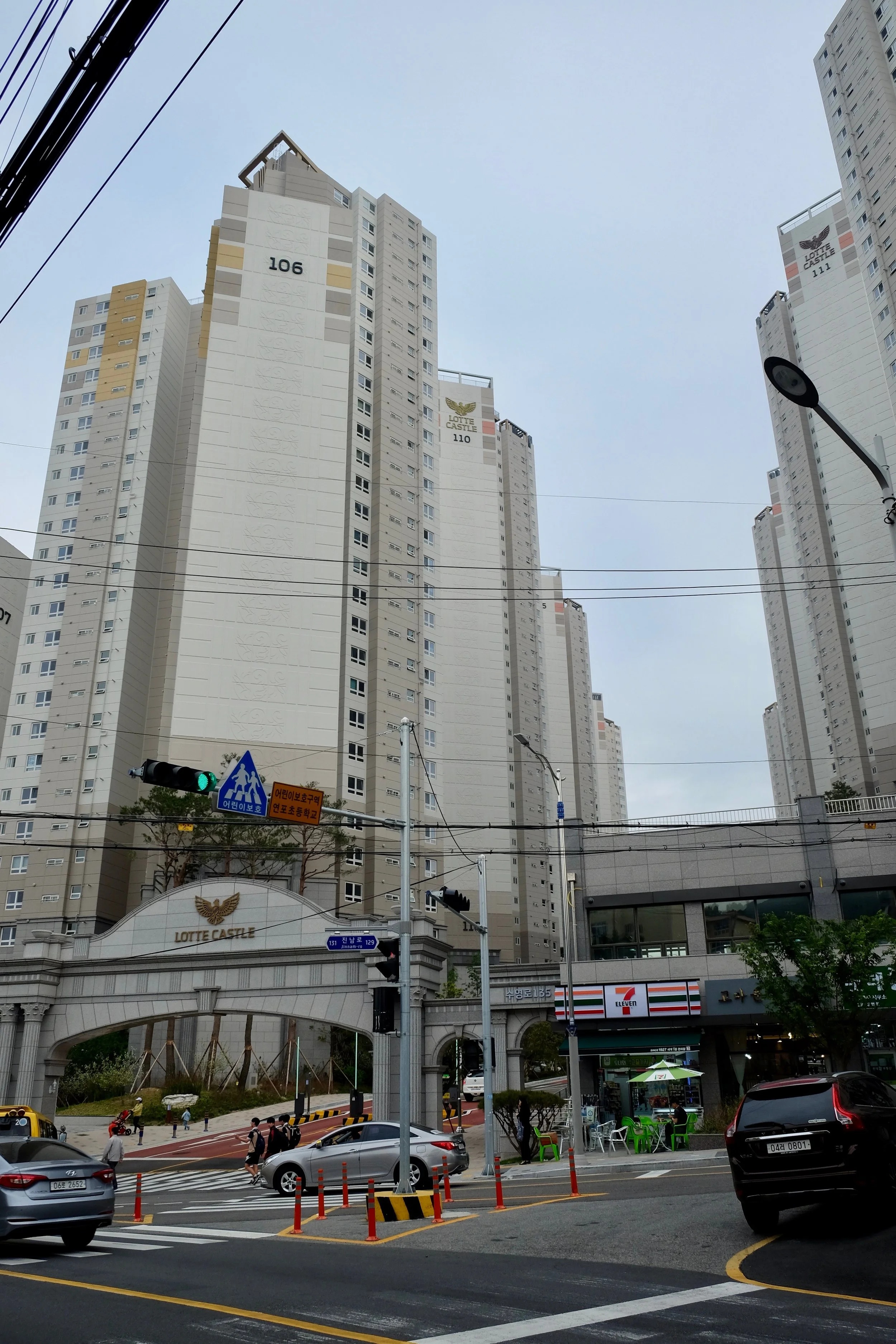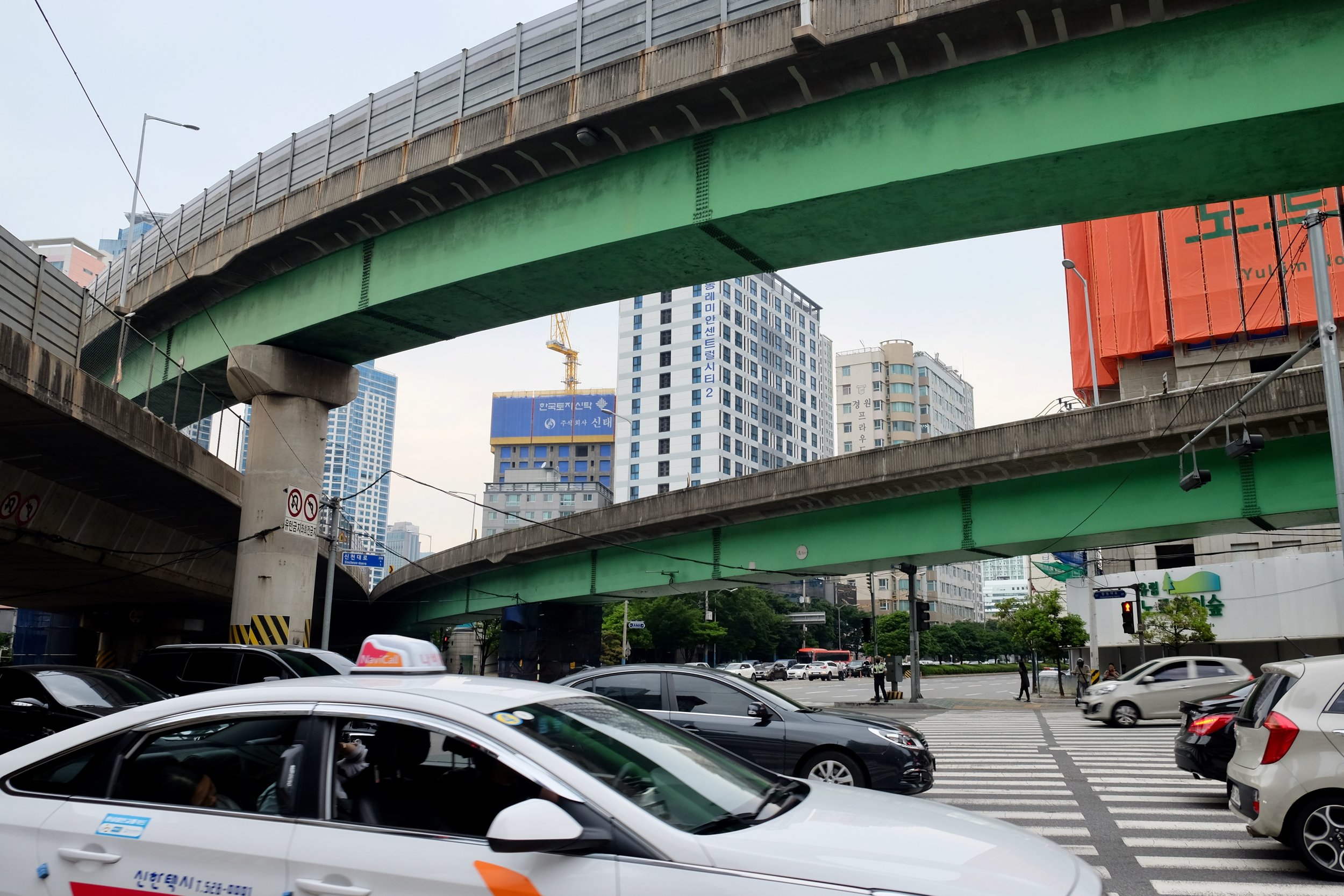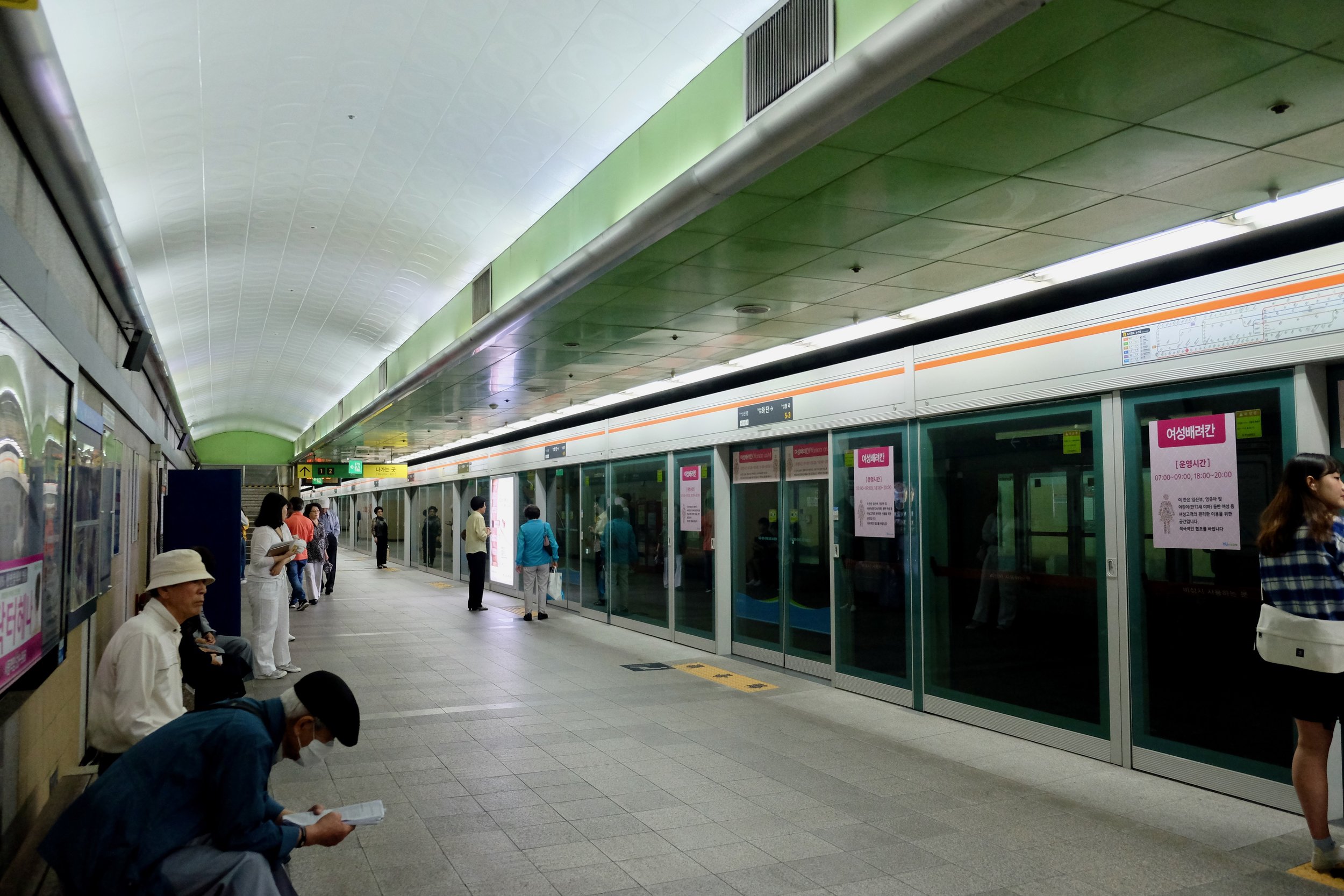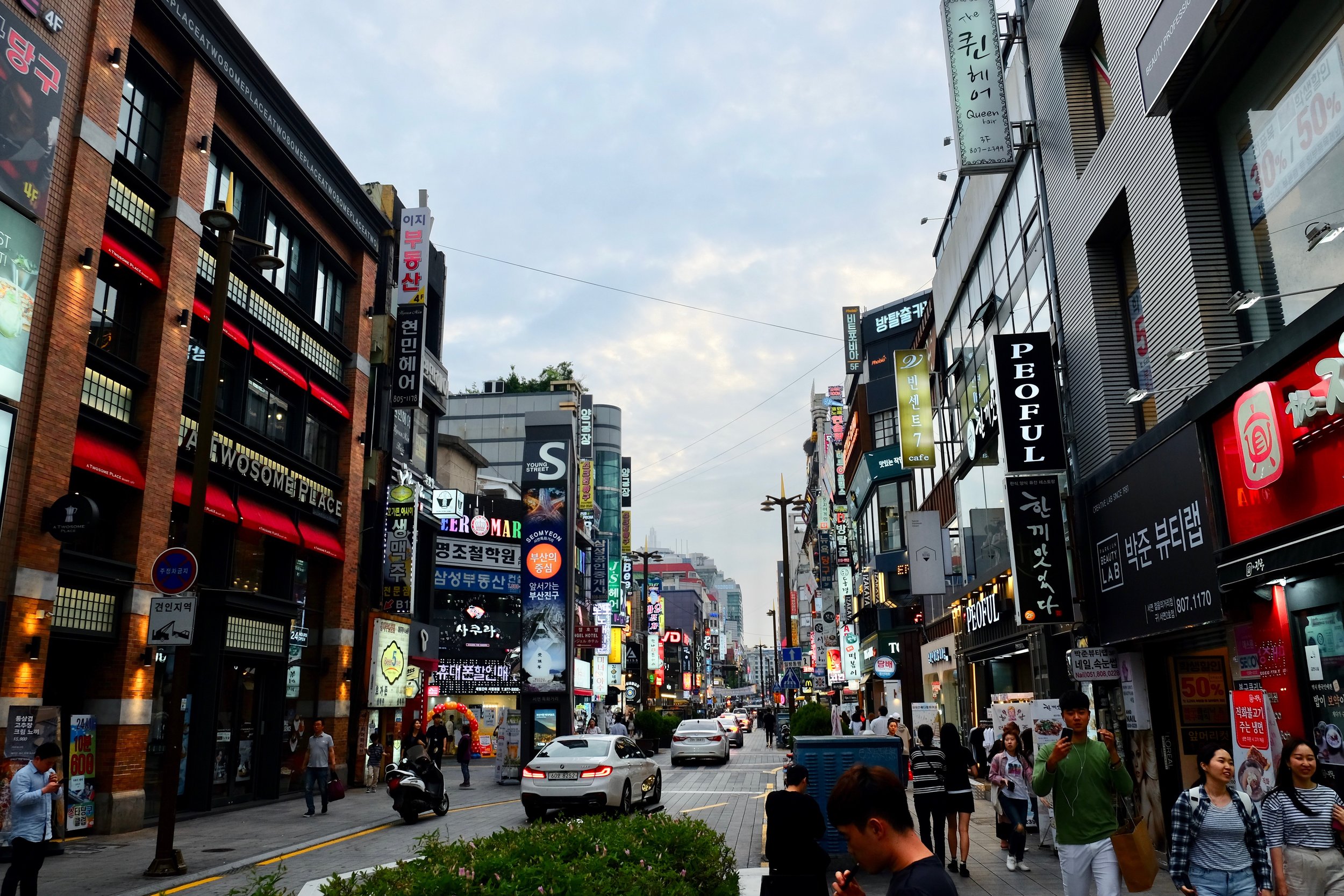Most tourists like to play it safe. Wherever in the world they end up, they’ll visit the landmarks they were told they’re supposed to see, take their selfie for Instagram so everybody can see they’ve checked it off their list, and then leave to do it all over again in the next country.
Busan’s Haeundae Beach is one of those locations. It’s Korea’s most famous, and reputedly finest beach, drawing in families, teens, and bronzed beach bums by the bucketload in the summertime. In the autumn, the Busan International Film Festival brings in the movie industry. But as it’s only 2 kilometres long, space is tighter here than a pair of speedos. Affluent expats, trendy locals, and the international convention crowd populate the many luxury apartments and five-star hotels that line the sandy expanse.
It’s the place to be in Busan, so naturally, we avoided it like the plague. Instead, we went to Gwangalli Beach, Haeundae’s less popular cousin, located inside a cove spanned by the enormous Gwangan Bridge. Despite its lesser renown, it’s a fantastic beach – the sand is soft and clean, the water is calm. Its half-moon shape means that on a clear day (which for us, it was not), you get an insane 360 view of the East Sea and the city behind you. Best of all, as we were there on a weekday morning, we had it almost to ourselves. When we stood on the edge of the water, we could barely hear anything along the 1.4 km stretch but the seagulls cawing for some food.
“How is it?” “Enghh.”
With the whole day laid out in front of us, we decided to explore this part of the city by walking beyond the promenade and seeing what lay behind the polished skyscrapers on the main road. Most apartment buildings within the Gwangan-dong area are grouped together to create mini neighbourhoods of their own, with supermarkets, pharmacies, even schools located in the centre to cater to the inhabitants of that particular district. It’s like a much cleaner, small-scale version of Hong Kong’s old Kowloon Walled City, brought to you, like everything else, by your benevolent overlords, Samsung, Lotte, or LG.
The chaebol (large industrial conglomerates that are run and controlled by an owner or family in South Korea) have fingers in many more pies than the smartphones and other electronic goods you’re familiar with. Samsung is also a key symbol of Korea’s economic transformation. This article from CNN explains exactly what the organisation means to Korean society:
“Its businesses reach deep into many parts of people's lives, from the cradle to the grave.
South Koreans can be born in a Samsung-owned medical centre, grow up learning to read and write with the help of Samsung tablets and go on to attend the Samsung-affiliated Sungkyunkwan University.
It doesn't end there. They may then live in a Samsung-built apartment complex, fitted out with the company's appliances and electronics. South Koreans can even end up at a Samsung funeral parlour when they die.”
Mental. Imagine having a company control your every move, knowing everything about you from sun up until your last breath. Getting you addicted to their services and products, which then keeps you locked in this cycle of dependency. Tallying your likes and preferences and feeding you ads that snag your attention to consume and buy more. Oh wait…
While wandering about, we came across something else that we’d been hoping to tick off our list while in this sprawling metropolis - Thai massages to soothe our aching muscles. It’s tradition for us to treat ourselves about halfway through the tour, and we spent the next hour trying to find a place that gave good value for money.
Most were in the 100,000 - 120,000 won range for 2 hours (to provide context, you pay less than half that for the same duration in Thailand), and we were about to give up on the search until we came across a shop that had just opened recently. The New Aroma Thai Massage was running a 50% off introductory offer at 30,000 won per hour, which was on par with what we were used to. Even better, it was located right next to our lunch venue, and after a hot pot of steaming beef stew and rice, we jumped at the chance and spent the next 120 blissful minutes in silence, save for Jess’s snoring.
You can find this right next to the Daeyeon station on Line 2.
By Grabthar’s Hammer, what a savings.
After reaching enlightenment, we slowly walked back to Seomyeon and got our bearings inside Bricks Coffee first. Evening was approaching, and the streets were getting lively. We needed to be alert in order to successfully navigate through the crowds, but after our afternoon of relaxation, we were in serious danger of falling asleep standing up. Shaking ourselves of our stupor, we went to Thursday Party, a bar that does indeed offer thumping get-togethers on Thursdays. Alas, we were there on a Tuesday, so we created our own party by playing a horrendous game of darts, much to the amusement of a group of Korean lads who laughed as Neil kept hitting one dud after another.
Then for the sake of eating something other than Korean food (another luxury we afford ourselves in the middle of a tour), we went to a Mexican restaurant for dinner called…wait for it…200 Million Man's Grill Dining & Pub.
Koreans are so creative.
Thursday Party, Yongso-ro 13beon-gil, Daeyeon 3(sam)-dong, Nam-gu, Busan, South Korea.
Can someone please explain to us the difference between these two?
